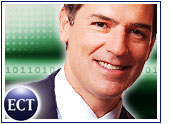
Jim Steele, president of worldwide operations at on-demand CRM services provider salesforce.com, joined the company in October 2002 after a two-year stint as executive vice president of worldwide sales at Ariba. Prior to that, Steele spent 22 years at IBM, where he held numerous positions, including vice president of North America’s western region and vice president of systems sales and general manager of telecommunications in the Asia-Pacific region.
CRM Buyer caught up with Steele at salesforce.com’s San Francisco headquarters earlier this month. He had just returned from Tokyo, where he spent three days mapping out the company’s operational growth strategy in Japan and the Far East.
CRM Buyer: How long has salesforce.com been in business?
Jim Steele: Mark [Benioff, CEO of salesforce.com] first opened the doors in February or March of 1999. The first product was launched in February of 2000.
CRM Buyer: You don’t typically hear of companies opening offices in Western Europe and Japan within four years, especially after the Internet bust. What happened? How was the company able to do that so quickly?
Steele: It was impressive to me that Mark decided early on to make sure salesforce was going to be a true global company and open up operations in places like Tokyo. That’s a long investment, something you’re not going to get payback from right away. It takes a few years at least. IBM invested in Japan over 75 to 80 years, so it is something that just doesn’t happen overnight. When salesforce opened in Japan four years ago, there was only one person. Now it’s up to 35 covering 350 customers and 5,500 to 6,000 users. What we’ve been working on these last three days is, how are we going to get that number to 10,000 and 20,000 users?
CRM Buyer: So the Japanese are open to the on-demand model?
Steele: It’s a key question we continue to come back to with our Japanese team. We’re still relatively small when compared to big software companies out there, but CRM in Japan is still probably about five years behind what it is in the U.S., and on-demand is a couple of years behind what it is in the U.S. I think [the Japanese] see the value in it, [given] the way the economy has been in Japan. They have been in an extended recession, and they realize finding a solution that will save them a lot of money, that they can move quickly on, is a good idea.
CRM Buyer: What has been your biggest challenge in Japan so far?
Steele: When salesforce.com first came into the market, people [in the U.S.] knew the CRM market, and many had gone through at least one failed implementation. It was almost too easy for us because when they saw our [no software] model, it was like the lights went on for them.
In Japan, there was a basic lack of understanding of how this was going to drive sales, so you’re not explaining why you need a better mousetrap, you’re explaining why you need a mousetrap in the first place. But the good news is that they’re very relationship-driven. They need to be able to trust the people they buy from. They’re not going to necessarily buy the best, lowest-cost solution with the best functionality because they are viewing this as a 10-year relationship, not just as a short-term solution for this fiscal period.
CRM Buyer: Mark Benioff said in a CRM Buyer interview about a year ago that salesforce.com’s biggest mistake was that it didn’t take Siebel head on from the beginning. What are your thoughts about this comment? How do you think the company is doing vis-a-vis Siebel?
Steele: When I came here a year and a half ago, Mark [already] was positioning the company against Siebel. Coming from IBM and Ariba where I was a big Siebel customer, I kind of laughed, like, “Come on, Mark; do you really think you’re up against Siebel?” And he said: “They are the market leader. That’s who we’re comparing ourselves to.”
In thinking back to the beginning of the company before I was here, salesforce.com definitely targeted the very low-end and mid-market companies, whereas Siebel never targeted them, so that’s probably where that [comment] came from.
When I came in, Mark said that we were going into the enterprise space to really compete with Siebel head on. A year and a half later, I’ve seen how successful we’ve been head-to-head fighting Siebel. I will take on Siebel anywhere, anytime, and my guys believe they can win every deal head-to-head with Siebel. There’s not a person in this company who does not feel confident that in a head-on war with Siebel, we can win.
CRM Buyer: What was salesforce.com’s initial strategy against Siebel?
Steele: Early on, the strategy was not to go head-to-head with Siebel because we wanted to sneak in under the radar screen in a department or small division, like a GE where they were a big Siebel customer, but three of the divisions decided they were not going to install Siebel. We didn’t want Siebel to know about that, because they would have crushed us three years ago. Now we have a foothold in companies like GE and Cisco, like Esker software in France and Ariba, which we’ve just won back [as a customer] from Siebel.
CRM Buyer: How has salesforce.com’s strategy changed in the last year or so?
Steele: We’ve done a couple of things. One, we’ve hired enterprise-class salespeople who understand how to fight the Siebel battle. We’ve hired people from SAP, from Siebel, from Ariba, from IBM, from PeopleSoft. These people are warriors; they know they have to win that battle.
Second of all, you have to have the product, the functionality, to take them on. With our Winter ’04 release that we announced back in November and with our s3 and sforce announcements back in June, it is amazing the gap that we have closed in the last six months. There’s very little that any customer can point to and say, “Boy, if you only had this…”
I challenge customers. I ask them, “What do you need that you don’t think we have?” and a year ago, I’d get a pretty good list — you know, wireless and offline, Outlook integration, workflow and group calendaring, team selling. The perception was that there was a gap, and that gap is all but closed now.
At the end of the day, it all comes down to customer success and whether we’re just talking or whether we’re delivering. We do deliver what we commit, and it’s a great thing to say, “Hey, there’s no gap between what we’re saying and what we’re doing,” because when there is that gap, that’s where you get burned.
CRM Buyer: How does salesforce.com differentiate itself from traditional, on-premise CRM vendors like Siebel?
Steele: Siebel has been plagued because they have positioned themselves that they are going to solve all these problems, and then the customer experience is something very different. We’ve capitalized on that. That’s been a good opportunity for us to go in and say: “You’ve been burned once. We’re not going to let that happen again. We’re going to actually share the risk with you. We’re not going to be successful unless you’re successful.”
Our customers do not have to make an up-front investment as they would with traditional licensed software. The part of the business they’re investing in is the part that often gets ignored: the people and the processes. All we are is a tool. The secret for success in CRM is people, processes and tools. And we are one leg of that stool. We give them a tool that doesn’t take them 12 months to learn.
We give the users a tool that they actually like to use. They don’t feel like management is holding a gun to their head and saying, “We’re not going to pay you if you don’t use it.” They use it because ultimately they see that it’s going to help them do their job better and they’re going to make more sales. More time in front of customers, less time doing administrative stuff.
CRM Buyer: What is the impetus behind salesforce.com’s “no software” model?
Steele: When people buy software, they have no choices. By renting software as a service as we do, they always have a choice. What that forces us to do is always think of ways to improve our customer service and relationships because we can’t take it for granted. Just because they’re a customer today doesn’t mean next year they are going to sign up again. We poll them, make sure they’re happy. We monitor their login rates to make sure they are using the service, and if they’re not, we go and ask them, “Why did you go from 90 percent usage to 40 percent usage?”
That’s something software companies don’t worry about because they’ve already sold the software. They don’t know how it’s being used or if it’s being used. They find out in surveys from Gartner and learn 20 percent is being used and 80 percent is shelfware. It’s a change of mentality when you sell a service versus a perpetual license. It’s a major, major psychological difference.
CRM Buyer: It seems that, unlike ERP, for example, the CRM market doesn’t seem saturated.
Steele: It’s hardly even been penetrated. CRM is in its infancy. Statistics bear that out — people have started putting in CRM systems just in the last two, three, four years. Plus, there haven’t been an overwhelming number of success stories in the market. We pride ourselves on our references, our success stories. We have a lot for a small company. However, we view this market as relatively untapped.
A lot of small and medium businesses could not afford a sales automation system buying it as software. By offering this service, we’re providing enterprise functionality that in the past you couldn’t afford unless you were a big enterprise. They pay a prorated amount. They don’t have to pay for the infrastructure or for setup costs.
CRM Buyer: Salesforce.com has been described as a trendsetter in the industry. Where do you see the company going in the future? What risks do you face, and how do you stay ahead of the curve?
Steele: It comes down to focus. We have to stay focused and execute. There are lots of different distractions, lots of opportunities to go off on a tangent, but we’ve decided as a company to stick to what we know we’re very good at. We built this CRM system starting with sales force automation at the core, and we’ve added to it with customer service and support, marketing, billing, invoicing, documents.
Our primary focus is to make the functionality deeper and deeper on the existing footprint that we have, and then, within the CRM framework and using sforce, to continue to expand horizontally, if you will. And [we will] continue to listen to our customers because we get instant feedback from 8,900 customers practically every single day. They know how to get to us, and if they’re not happy with something, we know we’re going to hear about it. We’re hooked in with them online, and there’s nowhere for us to hide.
CRM Buyer: Any other comments you would like to add?
It’s flattering that Siebel did come into [the on-demand] market. At the same time, I never want to come across as being cocky. Anyone with $2 billion in cash to spend, of course we’re worried about. But they have created a lot of visibility around the on-demand market that wasn’t there when we were by ourselves in this space.
What’s happened in the last three months since they’ve announced Siebel On-Demand is that our leads have gone through the roof. Our business performance is better than ever, and we have seen nothing but upside so far. It’s free advertising, because any customer that is now considering Siebel would be absolutely brain-dead not to at least come and kick the tires with us before they make a Siebel On-Demand decision.
So while we were competing and winning 70, maybe 80 percent of the deals in the on-demand CRM space before, it was a relatively small market. Maybe we won’t win 70, 80 percent with Siebel in the game, but Siebel thinks the market in the on-demand CRM space is going to be $7 billion over the next four to five years. If we get 50 percent of that, we’re going to be pretty darn happy!


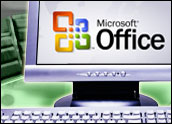
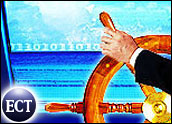
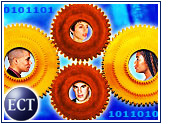
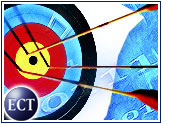
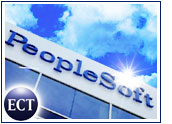


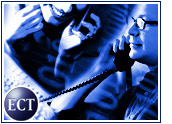

































Social CRM
See all Social CRM